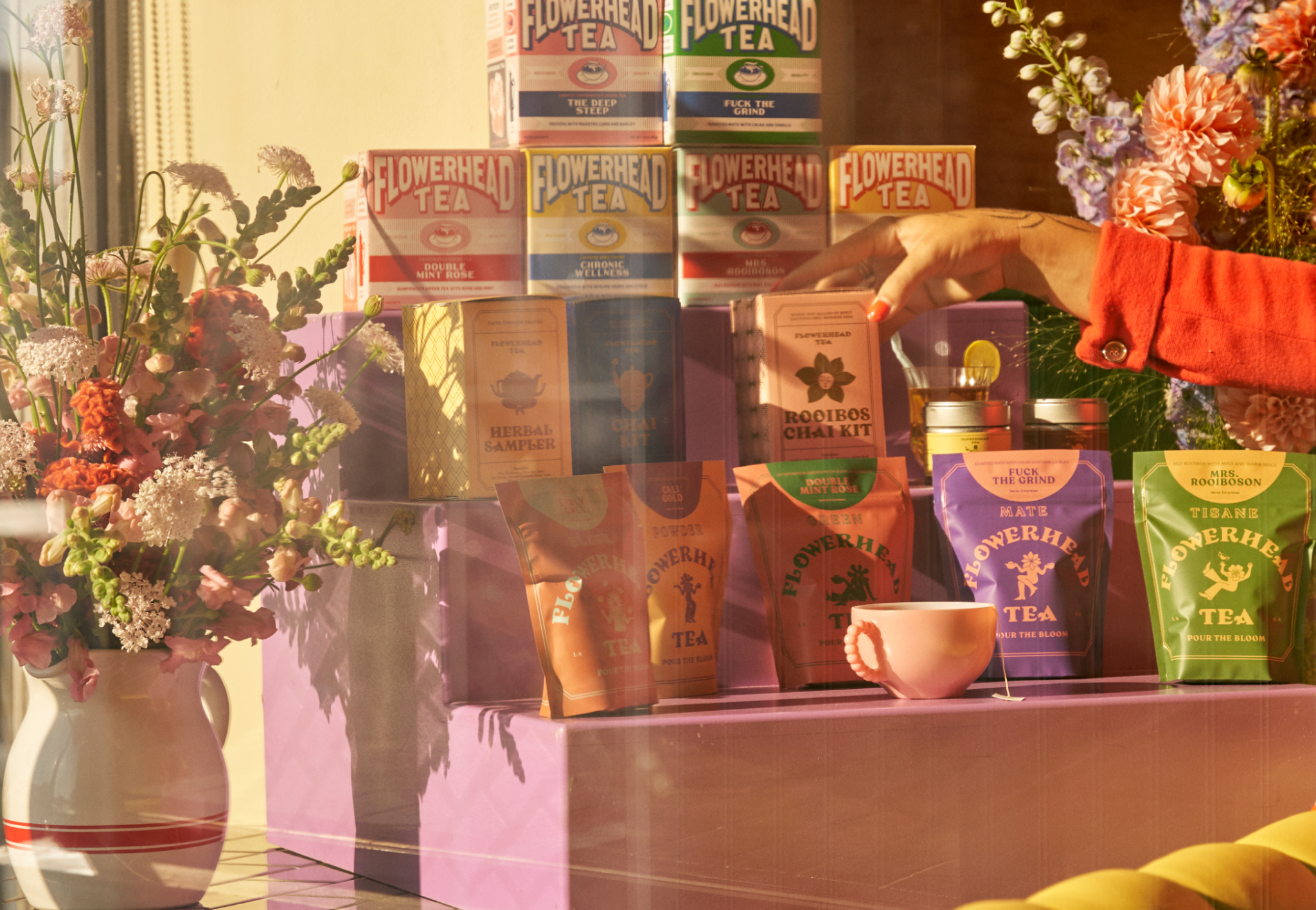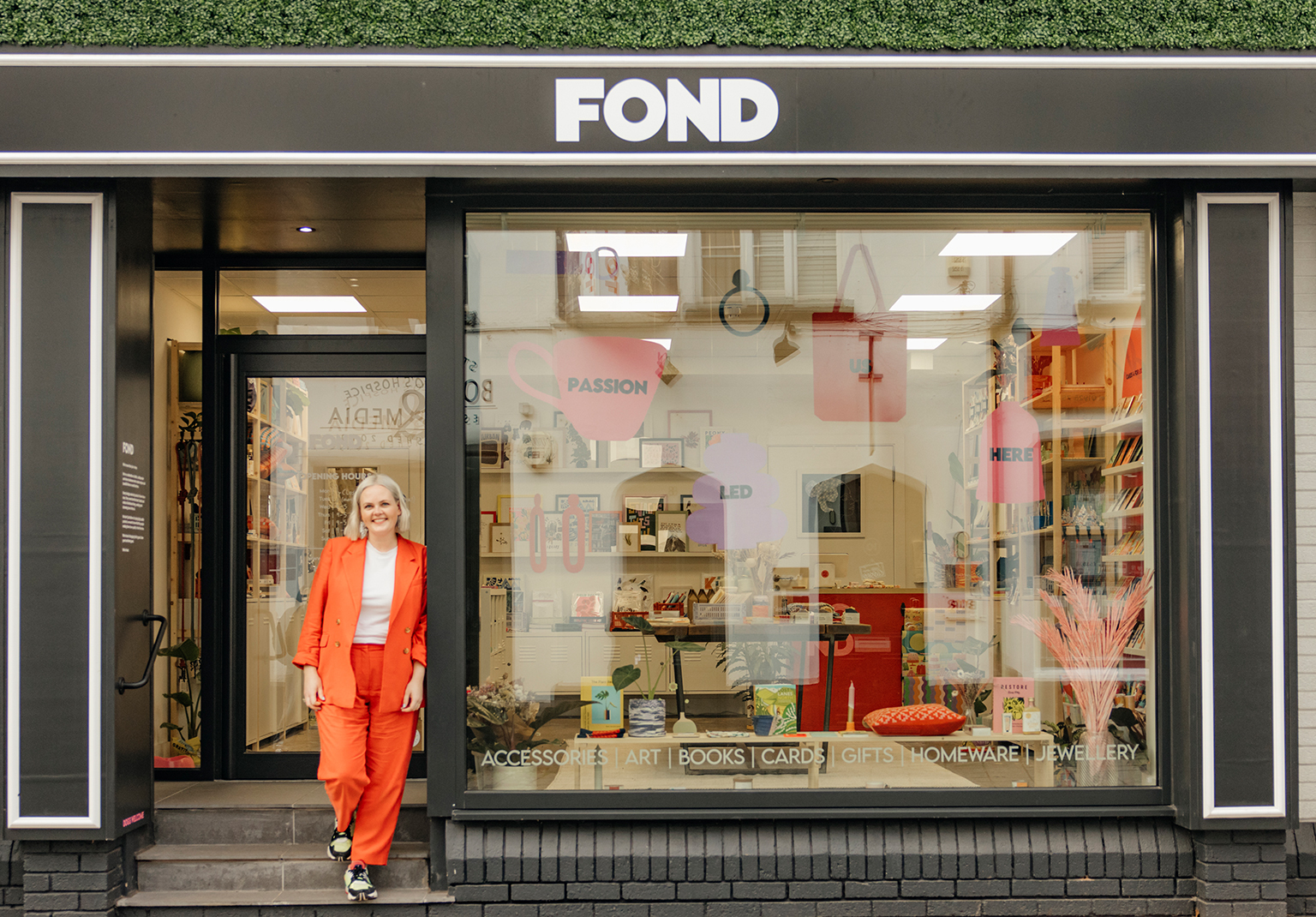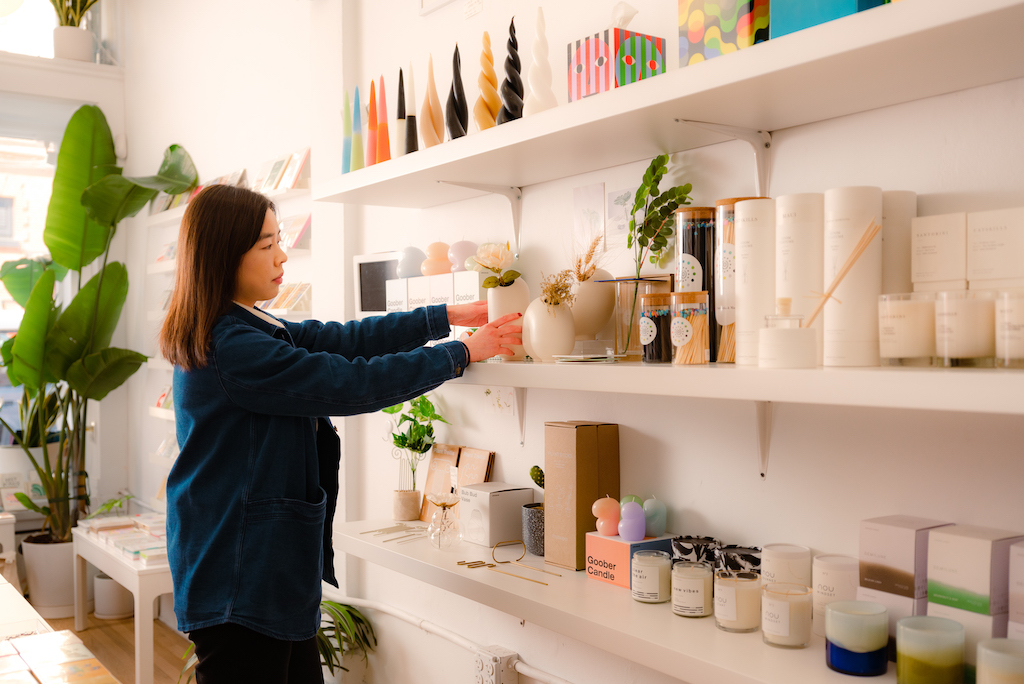
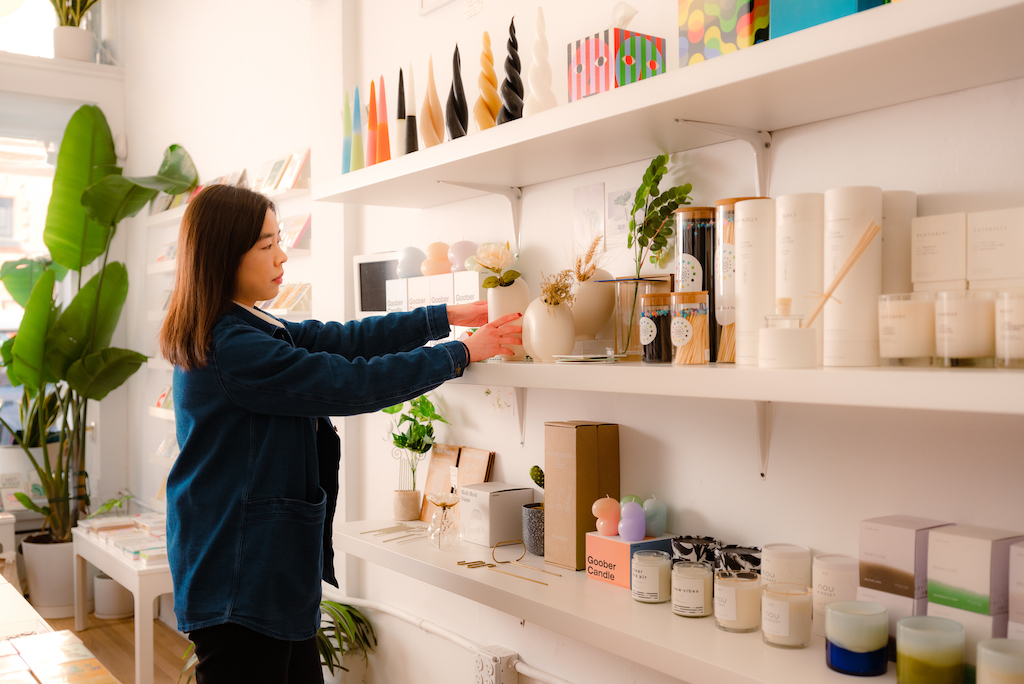
Product merchandising—the practice of strategically displaying and promoting merchandise in a store—can play a significant role in the success of a retail business. A compelling product display can help attract your store’s ideal customer, inspire repeat business, increase transaction values, and encourage social sharing.
Though hybrid shopping experiences continue to grow in popularity, consumers are still interested and eager to shop in person at brick-and-mortar stores. In fact, according to a study from Raydiant, consumers cite enjoying the experience and wanting to interact with products before buying as their most common reasons for doing so. This means that creating a unique shopping experience for customers is as important as ever.
To help you master product merchandising for your store, we’ve put together 12 tips to set up retail store displays that will keep customers coming back.
How to make your store displays pop:
The value of your store’s display extends well beyond aesthetics. It’s an opportunity to tell a story and prove why your store is worth visiting. To help you master product merchandising for your store, we’ve put together 12 tips to set up retail store displays that will keep customers coming back.
1. Tell your story with window displays and focal points
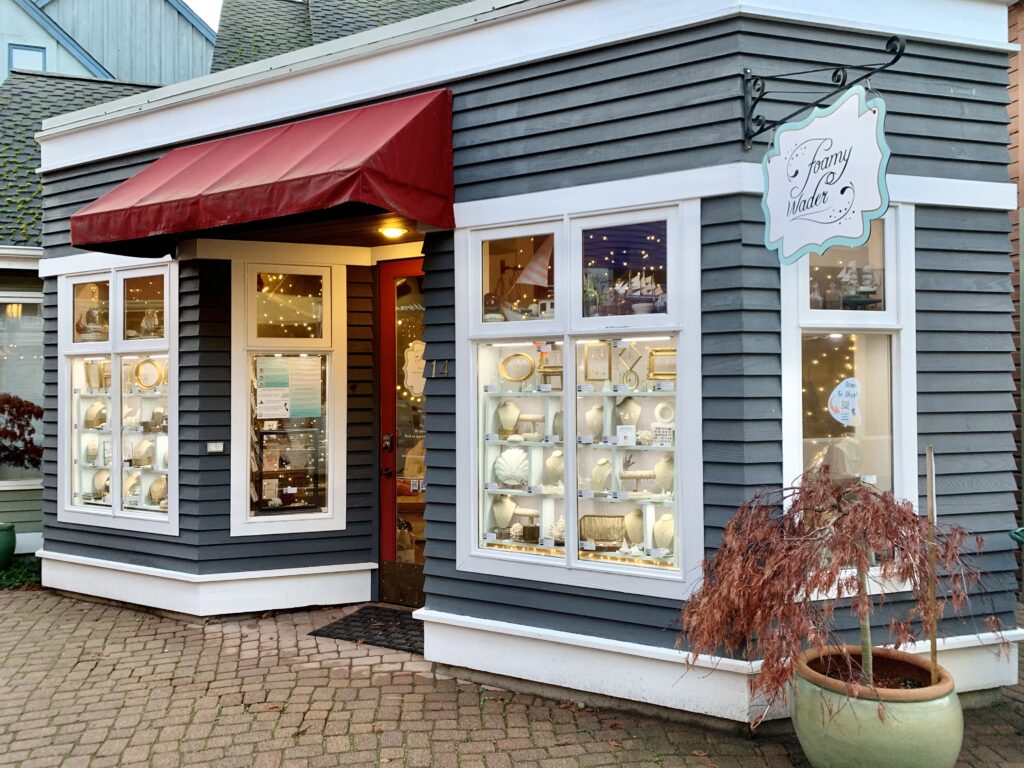
Your window display is a customer’s first impression of your shop and your brand. Window displays should attract attention, speak to a specific lifestyle, be consistent with your brand’s messaging and color palette, and invite people to come inside to learn more. You can also use your window displays to advertise sales, specials, seasonal products, or new merchandise. You can even use window displays to sell directly to shoppers passing by after-hours through the use of QR codes.
Once inside your store, your display should guide customers toward focal points where your most popular and profitable products are found. Think about traffic flow, how many focal points you want, and whether there’s enough space for customers to gather at each point.
2. Play around with colors
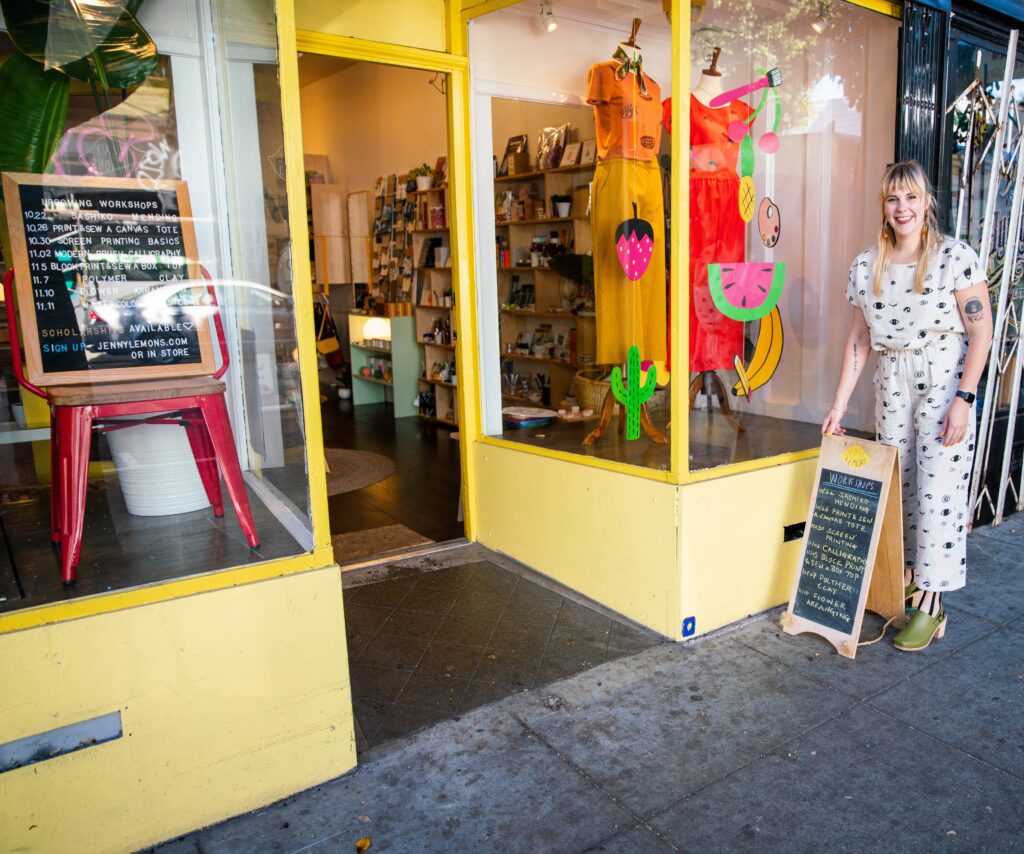
The right color palette can make all the difference in a product display. Try to limit your color palette to one main color and two or three accents to avoid a busy or overwhelming space, and remember to be consistent with your color scheme across all channels to build brand awareness.
Gather inspiration by looking at the packaging of your products to see if you can identify common color themes across products. For example, if you notice a lot of pastels, neon shades, or black-and-white packaging, you might choose two or three complementary shades that pull it all together. A neutral or white background can also have a calming effect and let the products speak for themselves.
For more inspiration, consider that certain colors can have specific associations—for example, green is often associated with nature, while blue may be associated with peace or reliability. You can use these associations as jumping-off points for determining the overall colors used in your product display.
3. Consider bundling your products
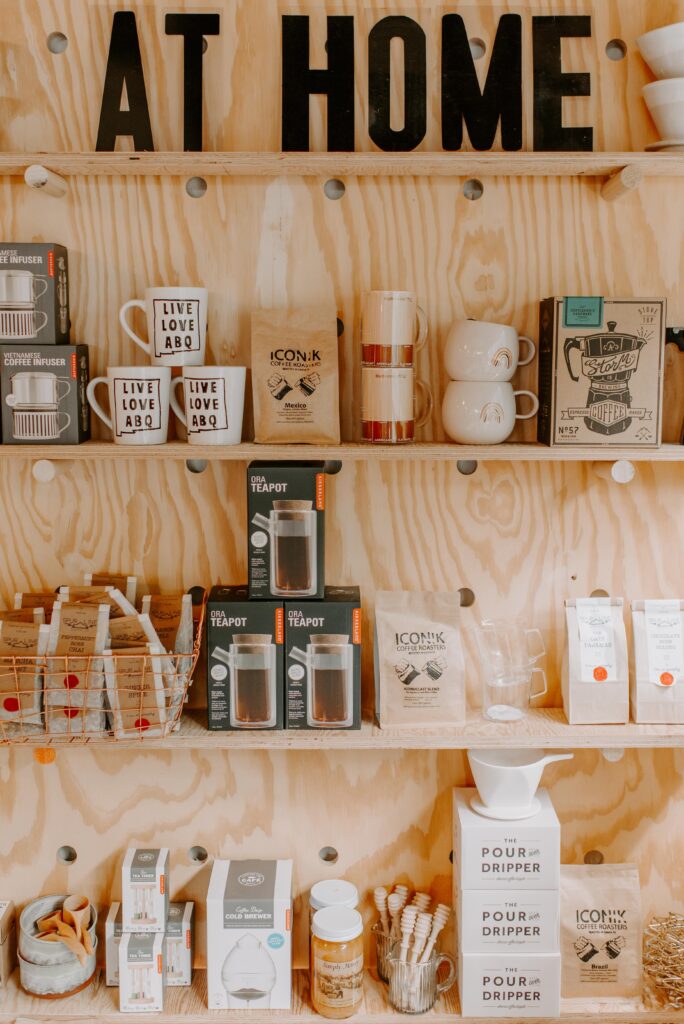
Bundling similar or complementary products together in one product display helps your customers visualize how products might be used and can increase order values by enticing shoppers to purchase something extra. It’s also an effective way to reposition surplus inventory.
You can group items based on color, room, theme, and more. For example, try displaying accessories of similar colors together, bundling back-to-school items, or displaying kitchen goods like mugs and teapots beside each other as in the above photo from Spur Line Supply Co.
When putting together your display, try to avoid placing too many similar products together. For example, dozens of candles displayed side by side can create an overwhelming number of options that might prevent your customer from buying any of them. Instead, try creating a display of one candle, one accessory like earrings or sunglasses, and one home decor item.
4. Immerse customers through touch and smell
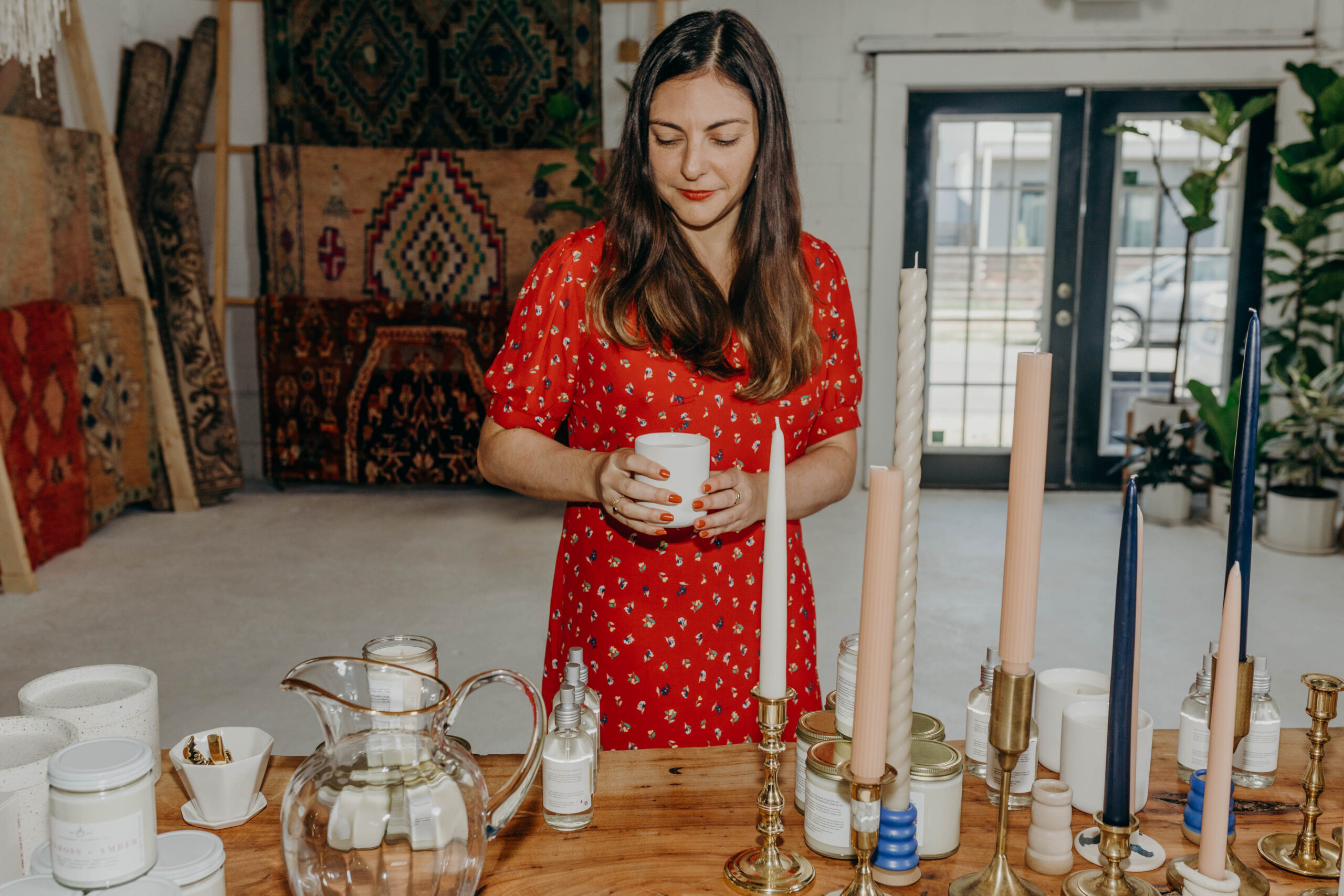
Draw on your customers’ senses by putting together displays that encourage them to engage with products by smelling, touching, or picking them up. If you sell scented candles or incense, consider lighting one as part of the display. If you have products that come in boxes, unbox a sample and put it out so customers can hold it in their hands.
5. Educate customers through signage
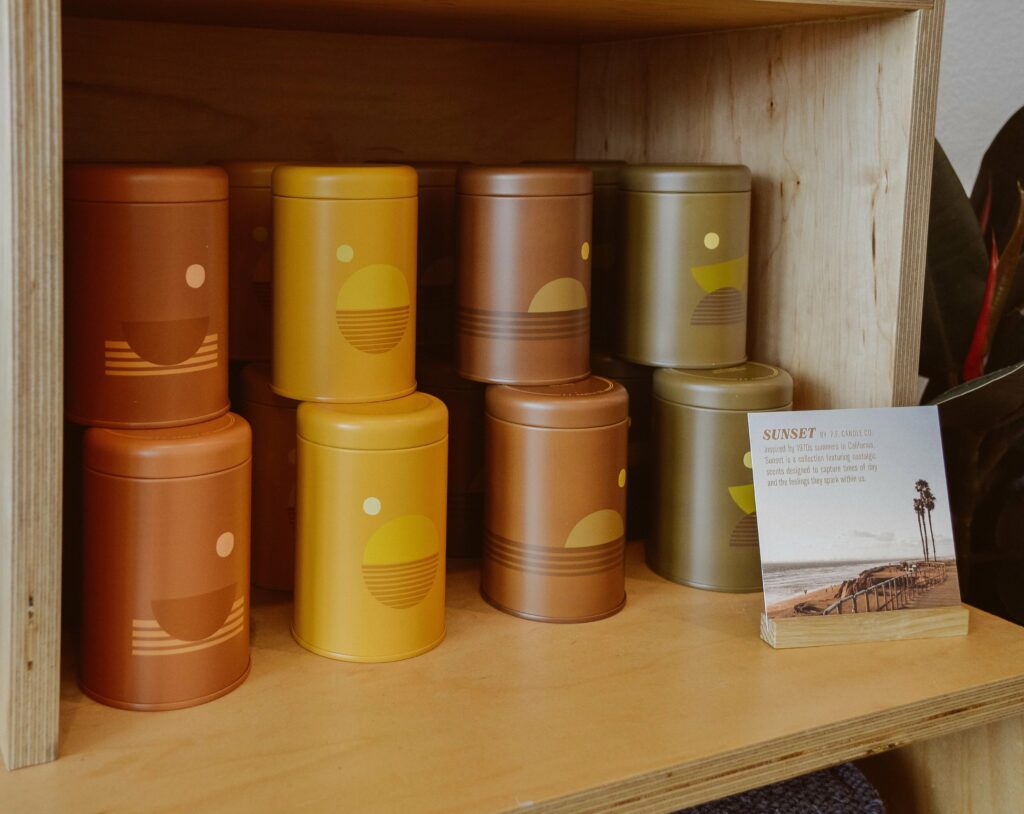
Emphasize the unique nature of your merchandise by placing small signs with displays that educate customers about the product. For example, place small signs or plaques next to handmade items to tell the story of the maker and where the product comes from. You can also use signage to go into more detail about a product’s benefits or distinctive qualities. Customers want to know that their money is going toward supporting their personal values, and using signage to offer more information about your products can help them feel confident about their purchasing decisions.
6. Experiment with lighting (but make sure everything is well-lit)
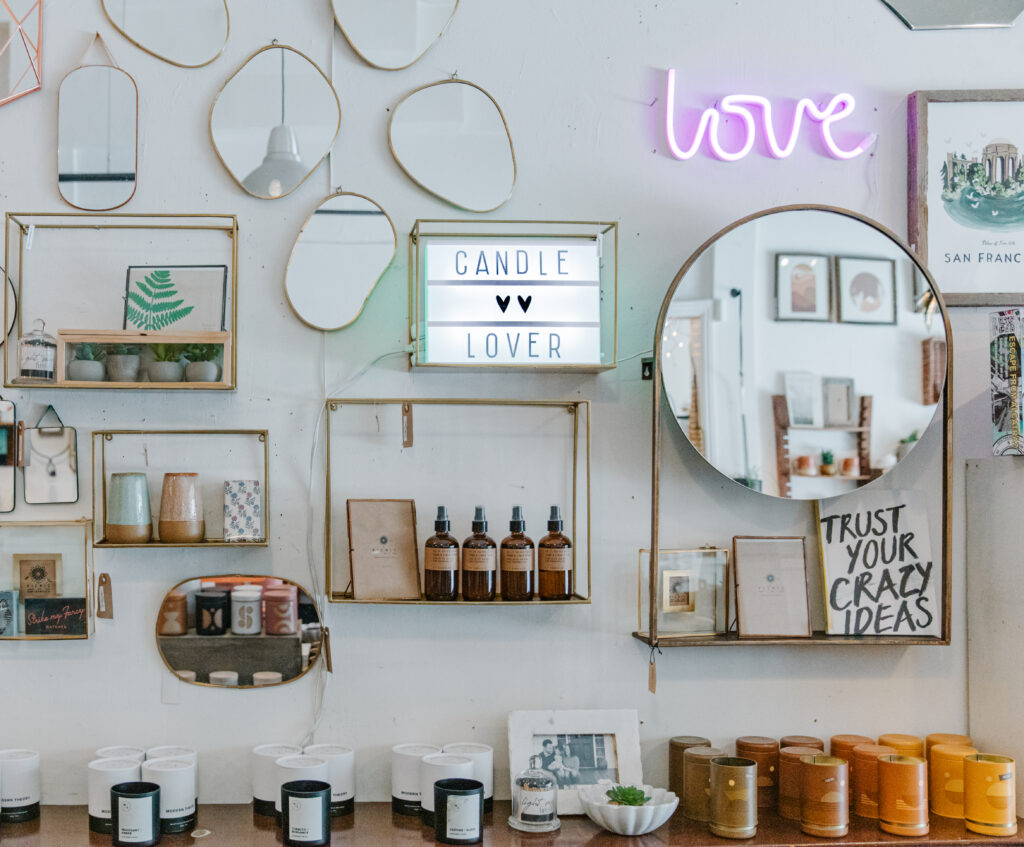
Ambient lighting, accent lighting, decorative lighting, and task lighting all affect the quality of a product display. Your main light fixtures create ambient lighting and should be bright enough that everyone can see the merchandise without creating an unpleasant or glaring environment. Your focal points and window displays should also include accent lighting to draw customers’ eyes to key products and signage, and from there you can consider decorative lighting to add another pop of color. Task lighting is also essential for areas such as fitting rooms or cash registers where people need to see what they’re doing.
7. Keep things fresh and seasonal
Customers are more likely to return frequently if they know they’ll see something new on each visit. Keep a calendar of events, holidays, new inventory dates, and seasonal changes that might influence your in-store merchandising and have some decor items and supplies on hand so you’re prepared. Seasonal plants can also make displays more attractive and create a pleasant shopping experience in the right retail environment. You can also refresh your product displays when you have new products to get your customers excited about what’s in store.
8. Get craft with your shelving
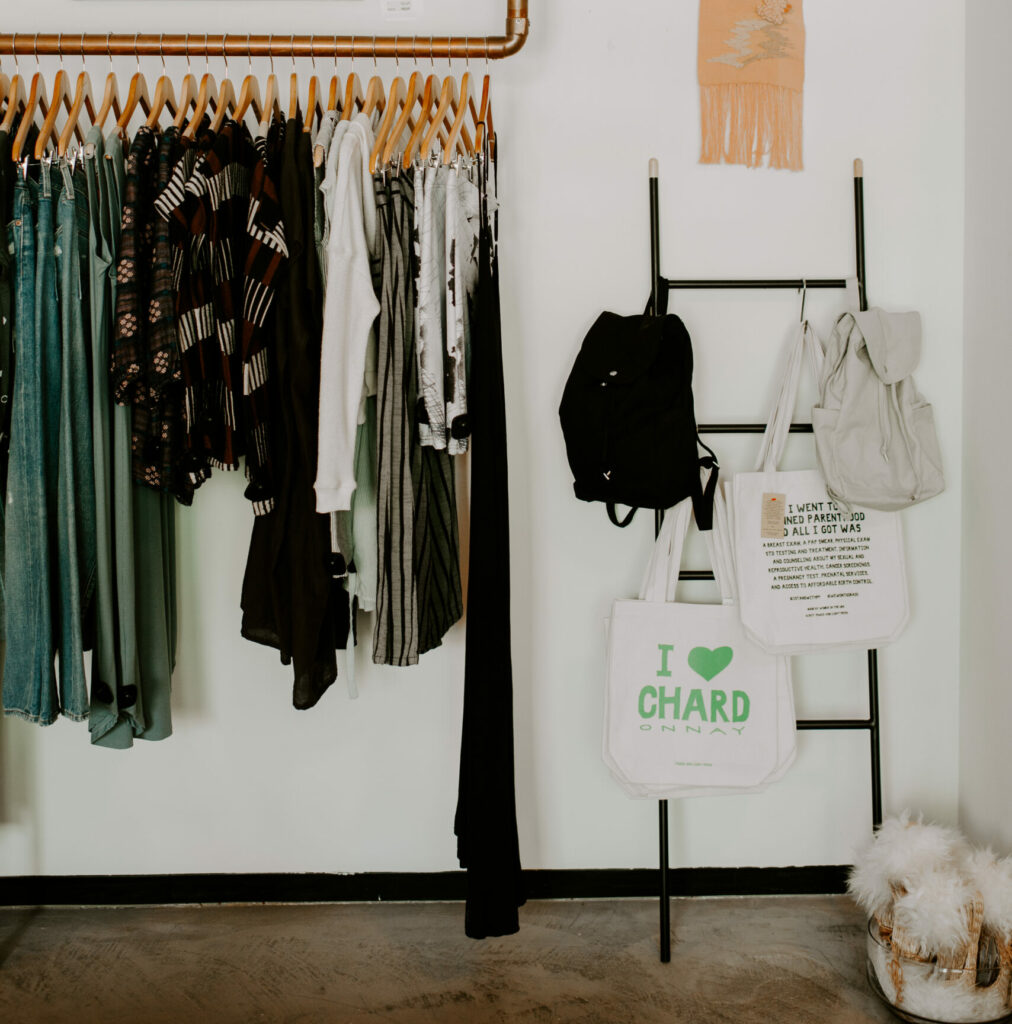
When it comes to creating a unique display, you don’t have to rely just on traditional shelving. Instead, try new and creative ways to build your display. Try hanging products like tea towels or greeting cards on a clothesline, using benches or wooden crates as shelves, or installing floating shelves throughout your store. Display smaller items in trays or baskets, and use a decorative wall ladder to drape clothing, towels, bandanas, and more. For inspiration, browse Pinterest boards of retail displays and trade show booths, and follow some of your favorite stores on Instagram to see how they display their products.
9. Make it personal
Independent shops are often a labor of love, so show off your passion for your products with Staff Picks. Store employees can write short notes about their favorite items and you can place them around the store or even dedicate a whole section to their picks. A genuine endorsement of a product from a real person can make a shopper feel more connected to an item and more inclined to buy. Independent retailers usually attract customers who want to support small businesses, so emphasizing the people behind a purchase is a great way to help them feel like their money is well spent.
10. Think local
When you plan your store’s product displays, leverage your location. Bring in some local flavor with regional products or items specific to your store’s neighborhood. Is your store close to a park? Arrange a table full of picnic blankets and baskets. Consider what your shoppers are likely to do before or after stopping into your store and anticipate what they might need.
11. Spotlight your bestsellers
For most retailers, the bulk of their sales comes from a few consistently best-selling items. If you know your customers buy a lot of mixing bowls, be sure to make the cooking display front and center in your store. You can even call out that certain items are a customer favorite. Consider shoppers’ eyelines and paths through the shop and prioritize displays that highlight your star products.
12. Remember that less is usually more
An overcrowded store can be an uninviting store. Consumers tend to associate open spaces in retail environments with higher value, so avoid overstuffing your shelves and racks. Instead try to make the most of your space, prioritize cleaning and organizing, and ensure that customers of varying heights can see all the merchandise. Tidying up and decluttering will always make your retail environment more pleasant for everyone.
Specific merchandising tips for specialty shops
Now that you have a sense of effective merchandising in general, let’s dive a bit deeper and consider specific strategies for different types of retail stores. Each retail shop has its own unique customer base that has specific expectations and needs. Your store displays should take these quirks into account and create a space that resonates with your target audience.
Gift shop
In gift shops, owners have an opportunity to create a fun atmosphere with displays that surprise and delight shoppers. People might pop in to shop for all kinds of happy occasions, so owners should encourage discovery and unstructured browsing. Here are some ideas:
- Group products by occasions such as weddings, baby showers, or birthdays so that customers can easily find the right gifts.
- To keep your inventory from feeling stale, rotate seasonal or holiday products often. Every visit to the store should feel fresh and engaging to shoppers.
- Engage your shoppers with special experiences like a monogramming station or a gift-basket assembly area. These personal touches can make gift shopping feel like a treat, rather than a chore.
Clothing store
When it comes to clothing stores, displays can show off individual items and can also give shoppers ideas for how different pieces can work together. You can pull together full outfits to encourage more sales and help shoppers envision themselves in the looks. (Check out this in-depth guide to fashion merchandising.) Here’s how to make your clothing pop in your store:
- Create mannequin displays that feature full outfits so that shoppers can get a feel for your entire line at a glance.
- Encourage your employees to wear some of your best-selling products so customers can see how the clothing looks on actual people.
- Integrate lifestyle products and props in your displays to show how clothing might fit customers’ lives. For instance, you might pair a cute dress with a new lipstick or a trendy water bottle.
Spa retail
In a spa retail setting, you may want to invoke feelings of tranquility and luxury. The way you arrange your display can make the spa feel like a special refuge and may encourage customers to treat themselves to a high-end product.
- Make shopping a luxurious experience itself by letting shoppers test or try on your wares.
- Tout the benefits and premium ingredients in your products with elegant signs or notes.
- Put together baskets with a selection of products so customers can have a spa day at home.
Sporting goods shop
To draw in shoppers, retail owners should put themselves in their customers’ shoes. What aren’t they getting when they shop for their sports gear at other shops? What could make your shop stand out?
- Display items that go together (like tennis shirts and sweatbands) on the same table.
- Prominently display the latest and greatest innovations such as new sneakers or high-tech accessories. Use signs to explain how these improvements can help shoppers’ games.
- Provide plenty of room for customers to test out the products. You might set aside space in your store for an indoor putting green or a hitting net.
Grocery store
For a small independent grocer, store displays should highlight the depth and breadth of the food options. You won’t sell everything that a major grocery chain does, so consider what sets your store apart.
- Celebrate locally sourced or artisan-crafted products, with signs that tell the producers’ story or information about the local produce. Include free samples to pique shoppers’ interest.
- Get to know what’s popular with your shoppers and organize products by the categories that matter most to them, like organic or gluten-free items. This can also create a sense of community and loyalty in your neighborhood.
- Switch out store displays to spotlight seasonal, limited-time, or discounted offerings.
Jewelry store
In a jewelry store, your display should showcase the high quality, craftsmanship, or uniqueness of each piece. Shoppers should be able to appreciate every glimmer and sparkle. (Check out our guide to selling artisan jewelry.)
- Use high-end, luxurious display structures, like glass cabinets or velvet trays.
- Organize products by jewelry type (earrings, bracelets, necklaces, rings) or by metal type (gold, silver, bronze) so that customers can browse easily.
- Put mirrors in strategic places so customers can examine jewelry pieces from all different angles.
- Install enough lighting to make the jewelry shine and catch the eye.
Thoughtful merchandising is vital for any type of retail store because it can boost sales and cultivate a distinct identity. By considering their shoppers’ needs, retail owners can craft captivating displays that make shopping a pleasure and set them apart from competitors. So lean into your creativity, center the customer experience, and let products speak for themselves with compelling displays.


